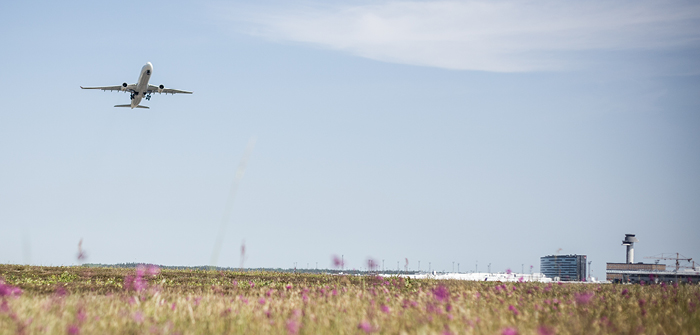ACI Europe has upgraded 12 more airports to the highest levels of its Airport Carbon Accreditation program – including Basel-Mulhouse airport in France, nine airports in Portugal, and Stockholm Arlanda and Göteborg Landvetter airports in Sweden.
The airports have been upgraded to Levels 4/4+ of the program. The requirements of Levels 4 and 4+ of Airport Carbon Accreditation include alignment of an airport’s carbon management with the Paris agreement, the inclusion of additional emissions sources in an airport’s carbon footprint, covering all significant operational emissions from third parties including airlines, and improved stakeholder engagement geared toward effective partnerships to deliver emissions reductions. Requiring airports to align their carbon management strategies and plans with the ambition of the Paris Agreement, according to which global warming should be limited to below 2⁰C and ideally 1.5⁰C, means that airports must define their reduction targets and associated emissions pathways accordingly. The airports join a list of 14 airports worldwide that have already made this step to enable deeper carbon cuts since the addition of the new levels in 2020.
To upgrade to Level 4 and reduce CO2 emissions, the operator of Basel-Mulhouse Airport EuroAirport acted on two levels. On the one hand, EuroAirport set the net-zero emissions target for its own infrastructure as early as 2030, instead of 2050. In order to achieve this, the airport is implementing a number of initiatives, such as the purchase of 100% green electricity, the replacement of the airport’s vehicle fleet with electric transportation and the gradual connection of the airport to an existing biomass-powered district heating network. Additionally, the airport plans include the future rail connection to the airport and a cross-company mobility plan that is supported by the French government.
Previously, the nine Portuguese airports operated by Aeroportos de Portugal (ANA)/Vinci Airports had been accredited at Level 2 ‘Reduction’. The airports were able to upgrade by two levels and secure Level 4 by actively reducing their CO2 emissions, through initiatives such as 100% renewable electricity, fleet electrification and LED deployment, and forging effective partnerships to secure absolute emissions reductions across the airports’ sites.
To this effect, in June 2021, ANA launched the stakeholders carbon forum to work with the main partners that operate at its premises to reduce its overall carbon footprint. The forum is the main platform of collaboration between the airports and their partners, including airlines, handlers, major energy consumers and entities linked to mobility, such as city councils and transportation companies. From this variety of stakeholders, working groups were created to define partnership plans focused on climate change and carbon management.
Olivier Jankovec, director general of ACI Europe, said, “I am delighted to witness more and more airports reach the two highest levels of Airport Carbon Accreditation. These achievements mean that airports are not only committed to addressing and eliminating emissions under their own control, but that they also embrace their role as catalysts for climate action across their entire sites. Airports are uniquely placed within the air transport ecosystem, acting as the industry’s representation on the ground, connecting a global industry to the local communities they serve. This unique position makes it part of their DNA to serve as platforms for greener, smarter, more climate-friendly operations and solutions. I would like to wholeheartedly congratulate all 12 airports on their excellent results.”


